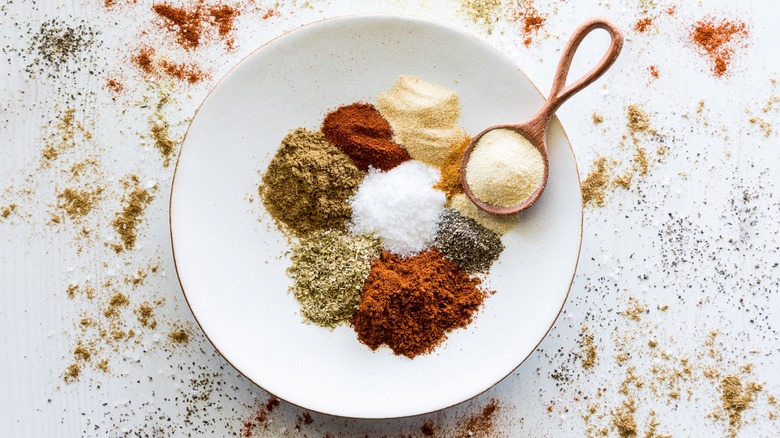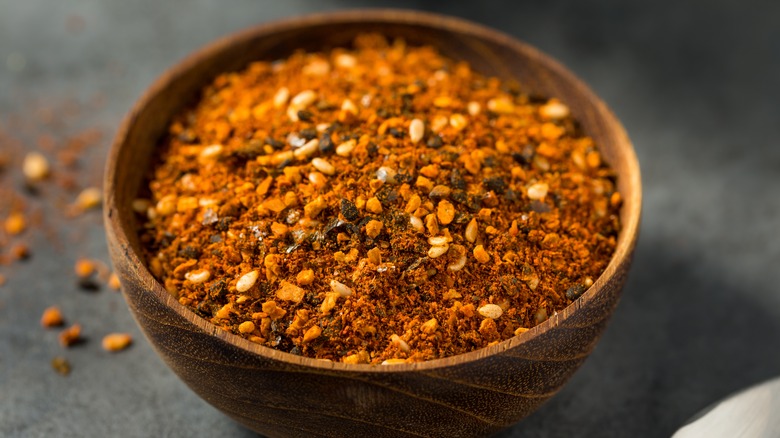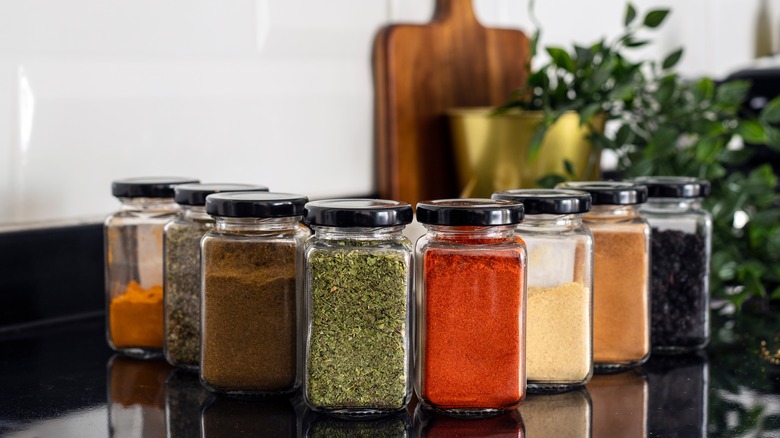Make Your Own Spice Blends At Home For Total Flavor Control
For everyone from professional chefs to avid home cooks, getting creative in the kitchen is one of life's many joys. Cooking up cuisines from around the world is the ideal way to explore that creativity, and to do that, you need plenty of different spices in lots of different combinations. Spice blends like Old Bay seasoning and herbs de Provence are readily available in most supermarkets, and you can find more unique combos like shichimi togarashi or ras el hanout at specialty spice shops or global food markets. But for full flavor control, making your own spice blends at home is the way.
Generally speaking, pre-made spice blends are quite well-balanced and there's no denying their convenience. However, that doesn't mean they can't be improved upon based on your own personal tastes or preferences. Making your own blend can also help you better complement whatever dish you happen to be whipping up (or a dish that you make often). For example, if you want hearty turkey chili to have a more spicy kick, you might make a chili powder blend that includes more cayenne pepper. With the wide variety of spices available, the sky's the limit when it comes to experimenting with different flavor profiles for your blends.
How to balance the six flavors
Let's clear the air: Our tongues can technically distinguish five different tastes, but when it comes to spices, we'd be remiss not to include spicy. While not a flavor per se, the sensation of heat and tingling can be a key component to balancing your blends.
As a rule of thumb, you want to have at least three flavors balancing each other in a dish, so you'll want to take that into account when blending spices. Consider the recipe (or recipes) you'll use with the blend, and think about what the final flavor will be. For example, something like shichimi togarashi is often used in rich, savory dishes like ultimate tonkatsu ramen and chicken and scallion yakitori, so it benefits from having a bit of sour flavor from lemon zest and a bit of heat from chili peppers. Also, you can play around with those ratios based on your own personal palate.
Making and storing spice blends
Speaking of ratios — there isn't really a magic ratio since each blend and each final dish will rely on your own unique preferences. However, a good place to start if you're new to blending spices is with a 1:1:1 ratio. You can then taste your dish as you go and play around with adding a little more of this or a little more of that. Start with something simple that uses essential spices you should have in your pantry, like smoky taco seasoning. Another option is to use a spice blend recipe as your jumping-off point, especially if you want to tackle something slightly more complicated, like house-blend five spice powder or homemade za'atar, which includes extra steps like toasting and grinding.
Once you've whipped up a batch of your own house-made blend, you'll want to store your spices and keep them fresh to make sure your hard work doesn't go to waste. For a longer shelf life, spices should be stored in an airtight container away from heat and sunlight. While they don't technically go bad, spice blends will start to lose their potency after about two years.


